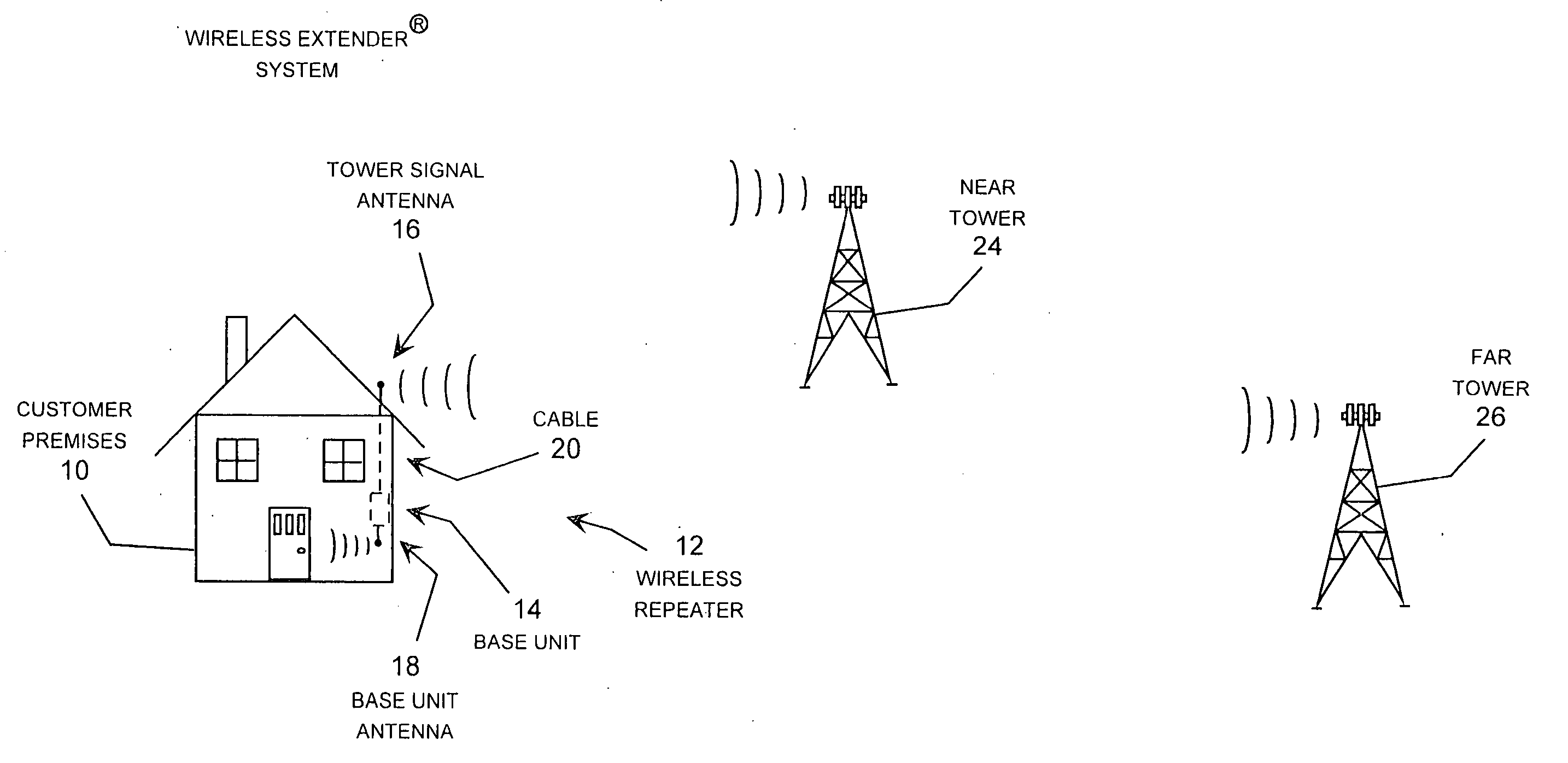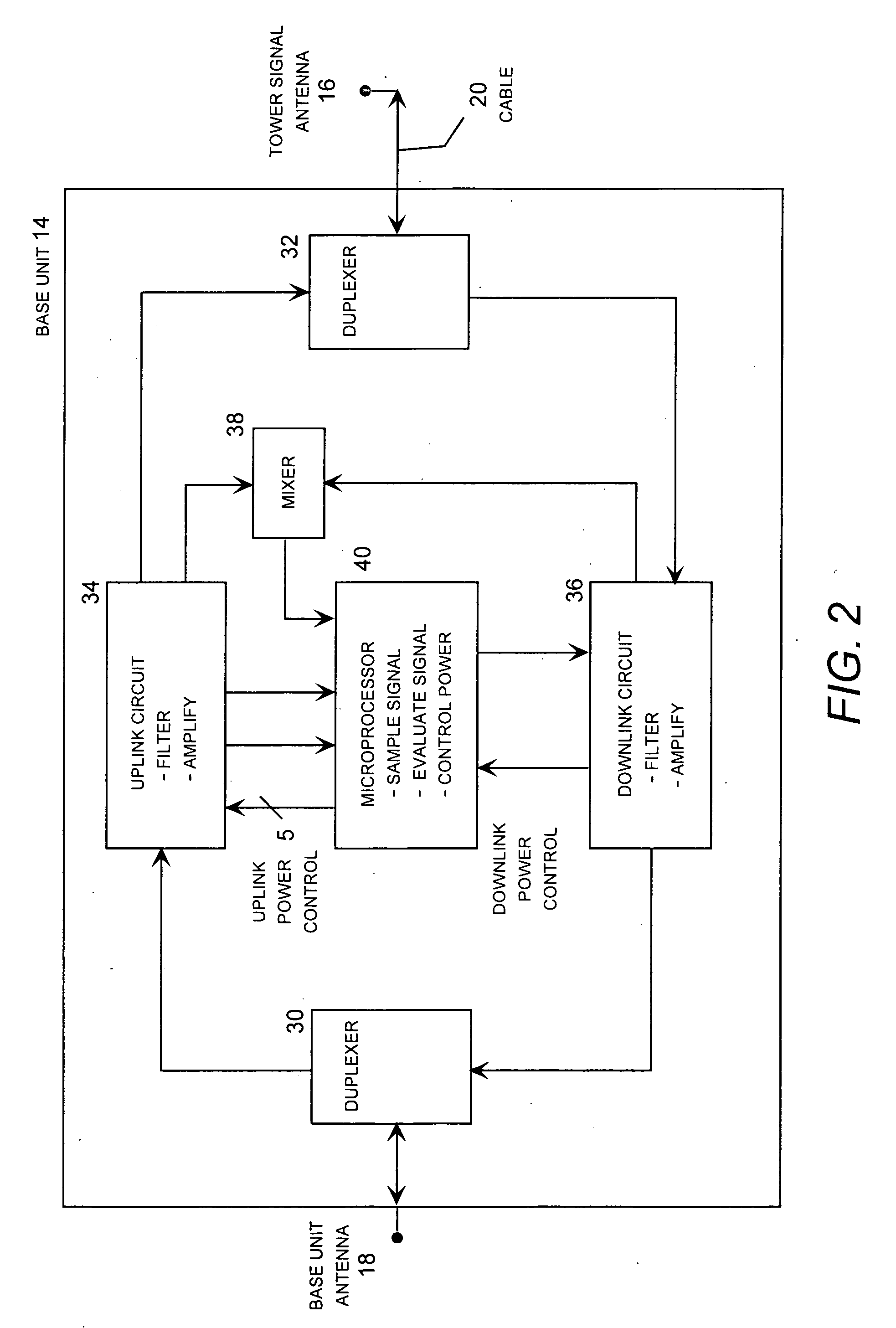Wireless repeater implementing low-level oscillation detection and protection for a duplex communication system
a duplex communication system and repeater technology, applied in the field of duplex communication systems, can solve the problems of impracticality for service providers to attempt, propagation of communication signals, loss of service for wireless telephone systems, etc., and achieve the effect of maximizing the coverage gain
- Summary
- Abstract
- Description
- Claims
- Application Information
AI Technical Summary
Benefits of technology
Problems solved by technology
Method used
Image
Examples
Embodiment Construction
[0033] In view of the foregoing, it will be appreciated that the present invention provides significant improvements in wireless repeaters for home and small business use. The modular wireless repeater is typically deployed with a roof-mounted tower-signal antenna and a base unit with a base unit antenna located within the building, with the tower-signal antenna connected to the base unit by a 75 Ω coaxial cable. The system allows a customer to purchase a unit for all of the wireless service providers in a given frequency band, such as PCS or Cellular, and then add on modules for additional service providers in other bands that the customer may desire in the future. The system can also be expanded to accommodate new frequency bands and data modulation techniques that may be implemented in the future. For wireless repeaters, this system uniquely uses 75 Ω coaxial cable for satellite television and can, therefore, be installed by any satellite television installer. The system also det...
PUM
 Login to View More
Login to View More Abstract
Description
Claims
Application Information
 Login to View More
Login to View More - R&D
- Intellectual Property
- Life Sciences
- Materials
- Tech Scout
- Unparalleled Data Quality
- Higher Quality Content
- 60% Fewer Hallucinations
Browse by: Latest US Patents, China's latest patents, Technical Efficacy Thesaurus, Application Domain, Technology Topic, Popular Technical Reports.
© 2025 PatSnap. All rights reserved.Legal|Privacy policy|Modern Slavery Act Transparency Statement|Sitemap|About US| Contact US: help@patsnap.com



